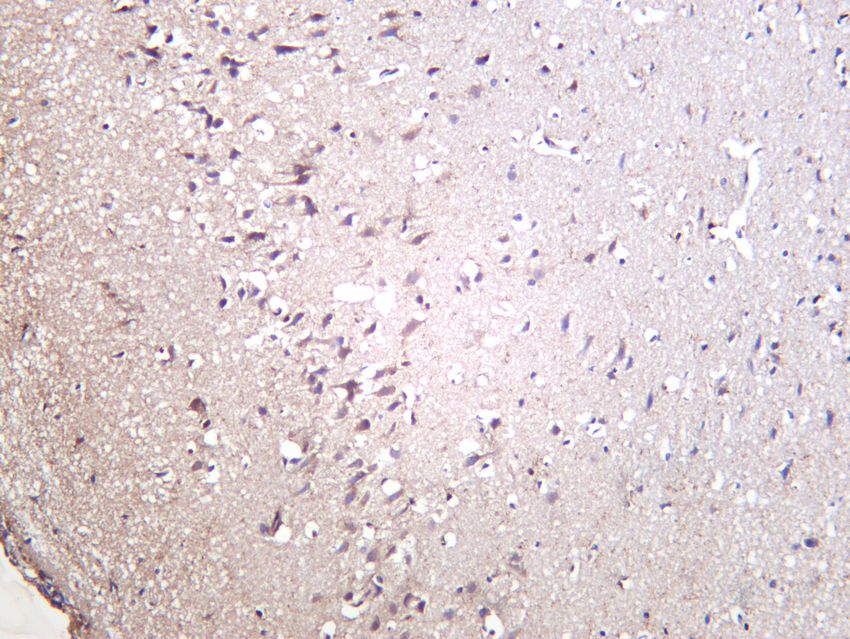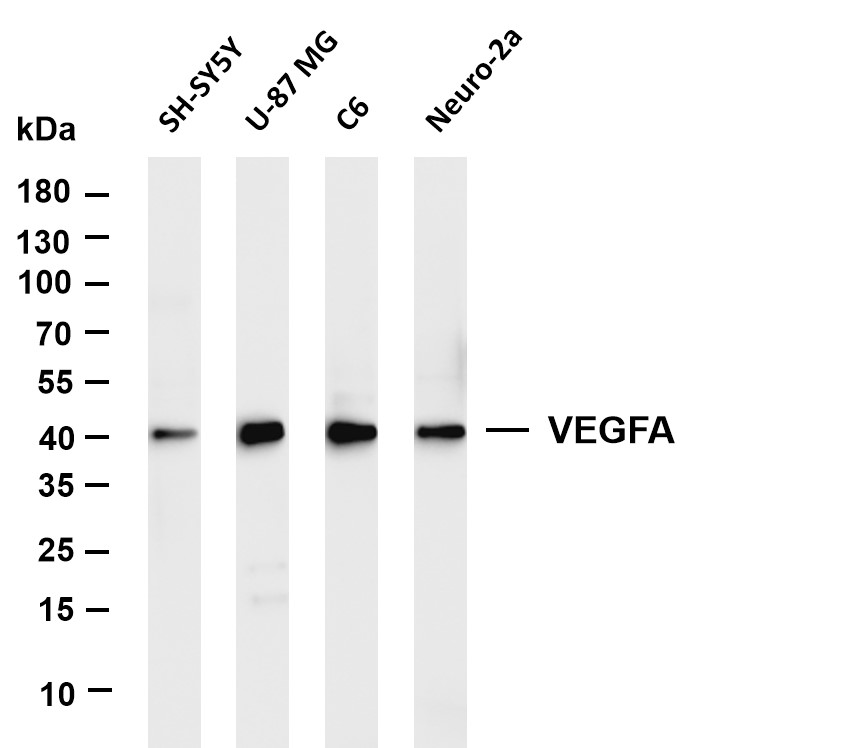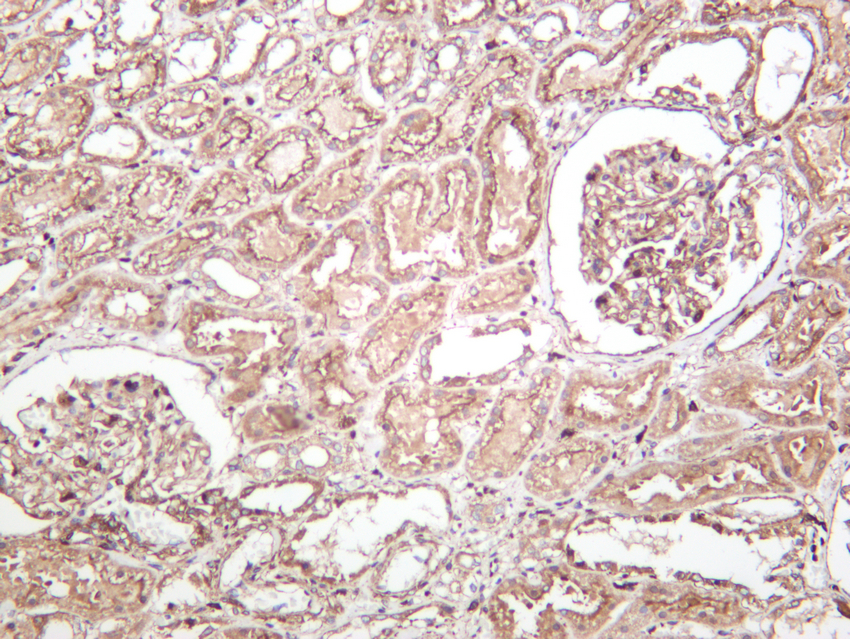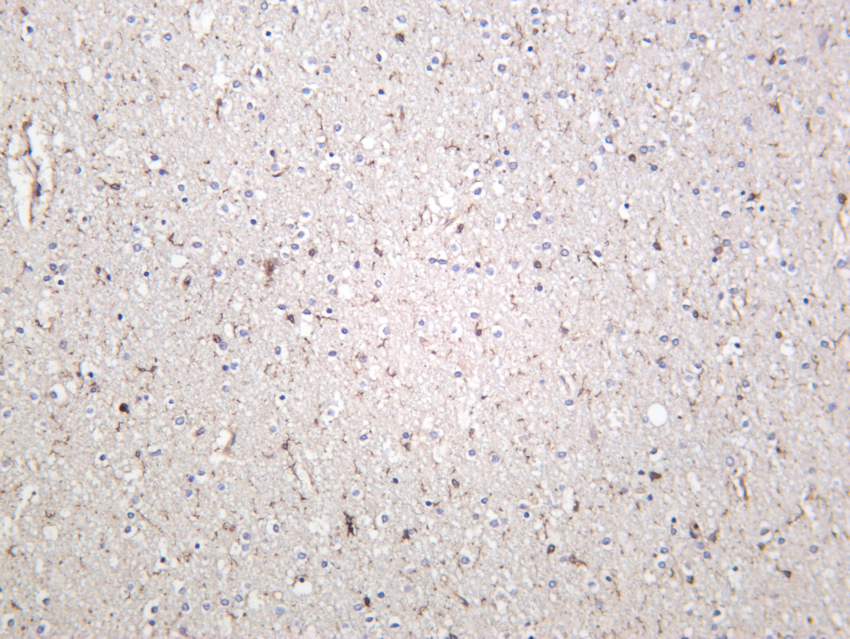VEGFA (PT0522R) PT® Rabbit mAb
- Catalog No.:YM8345
- Applications:WB;IHC;IF;IP;ELISA
- Reactivity:Human; Mouse; Rat;
- Target:
- VEGF-A
- Fields:
- >>EGFR tyrosine kinase inhibitor resistance;>>MAPK signaling pathway;>>Ras signaling pathway;>>Rap1 signaling pathway;>>Calcium signaling pathway;>>HIF-1 signaling pathway;>>PI3K-Akt signaling pathway;>>VEGF signaling pathway;>>Focal adhesion;>>Relaxin signaling pathway;>>AGE-RAGE signaling pathway in diabetic complications;>>Human cytomegalovirus infection;>>Human papillomavirus infection;>>Kaposi sarcoma-associated herpesvirus infection;>>Pathways in cancer;>>Proteoglycans in cancer;>>MicroRNAs in cancer;>>Chemical carcinogenesis - receptor activation;>>Chemical carcinogenesis - reactive oxygen species;>>Renal cell carcinoma;>>Pancreatic cancer;>>Bladder cancer;>>Rheumatoid arthritis;>>Fluid shear stress and atherosclerosis
- Gene Name:
- VEGFA
- Protein Name:
- Vascular endothelial growth factor A
- Human Gene Id:
- 7422
- Human Swiss Prot No:
- P15692
- Mouse Gene Id:
- 22339
- Mouse Swiss Prot No:
- Q00731
- Rat Gene Id:
- 83785
- Rat Swiss Prot No:
- P16612
- Specificity:
- endogenous
- Formulation:
- PBS, 50% glycerol, 0.05% Proclin 300, 0.05%BSA
- Source:
- Monoclonal, rabbit, IgG, Kappa
- Dilution:
- IHC 1:1000-1:5000;WB 1:2000-1:10000;IF 1:200-1:1000;ELISA 1:5000-1:20000;IP 1:50-1:200;
- Purification:
- Protein A
- Storage Stability:
- -15°C to -25°C/1 year(Do not lower than -25°C)
- Other Name:
- VEGFA;VEGF;Vascular endothelial growth factor A;VEGF-A;Vascular permeability factor;VPF
- Molecular Weight(Da):
- 27kD
- Observed Band(KD):
- 40kD
- Background:
- This gene is a member of the PDGF/VEGF growth factor family. It encodes a heparin-binding protein, which exists as a disulfide-linked homodimer. This growth factor induces proliferation and migration of vascular endothelial cells, and is essential for both physiological and pathological angiogenesis. Disruption of this gene in mice resulted in abnormal embryonic blood vessel formation. This gene is upregulated in many known tumors and its expression is correlated with tumor stage and progression. Elevated levels of this protein are found in patients with POEMS syndrome, also known as Crow-Fukase syndrome. Allelic variants of this gene have been associated with microvascular complications of diabetes 1 (MVCD1) and atherosclerosis. Alternatively spliced transcript variants encoding different isoforms have been described. There is also evidence for alternative translation initiation fro
- Function:
- function:Growth factor active in angiogenesis, vasculogenesis and endothelial cell growth. Induces endothelial cell proliferation, promotes cell migration, inhibits apoptosis, and induces permeabilization of blood vessels. Binds to the VEGFR1/Flt-1 and VEGFR2/Kdr receptors, heparan sulfate and heparin. Neuropilin-1 binds isoforms VEGF-165 and VEGF-145. Isoform VEGF165B binds to VEGFR2/Kdr but doesn't activate downstream signaling pathways, doesn't activate angiogenesis and inhibits tumor growth.,induction:Regulated by growth factors, cytokines, gonadotropins, nitric oxide, hypoxia, hypoglycemia and oncogenic mutations.,online information:VEGF entry,similarity:Belongs to the PDGF/VEGF growth factor family.,subcellular location:VEGF121 is acidic and freely secreted. VEGF165 is more basic, has heparin-binding properties and, although a signicant proportion remains cell-associated, most is f
- Subcellular Location:
- Secreted
- Expression:
- Isoform VEGF189, isoform VEGF165 and isoform VEGF121 are widely expressed. Isoform VEGF206 and isoform VEGF145 are not widely expressed. A higher level expression seen in pituitary tumors as compared to the pituitary gland.
Efficacy of Shexiang Tongxin Dropping Pills in a Swine Model of Coronary Slow Flow WB Pig 1:500 left ventricular apex/
Interleukin-35 inhibits angiogenesis through T helper17/ Interleukin-17 related signaling pathways in IL-1β-stimulated SW1353 cells. MOLECULAR IMMUNOLOGY2022 Jul;147:71. Human SW1353 cell
Recombinant human endostatin reduces hypertrophic scar formation in rabbit ear model through down-regulation of VEGF and TIMP-1. African Health Sciences Afr Health Sci. 2016 Jul;16(2):542-553 WB Rabbit wound area tissue
Deciphering the performance of polo-like kinase 1 in triple-negative breast cancer progression according to the centromere protein U-phosphorylation pathway. American Journal of Cancer Research Am J Cancer Res. 2021; 11(5): 2142–2158 WB Human MDA-MB-231cell, CAL-51 cancer cell
CXCR7/p-ERK-Signaling Is a Novel Target for Therapeutic Vasculogenesis in Patients with Coronary Artery Disease. PLoS One 2016 Sep 09 WB Human 1:500 EOCs
Inhibin B suppresses anoikis resistance and migration through the transforming growth factor‐β signaling pathway in nasopharyngeal carcinoma. CANCER SCIENCE Cancer Sci. 2018 Nov;109(11):3416-3427 WB Human HNE1 cell, 5-8F cell
Endothelin-1 Activates the Notch Signaling Pathway and Promotes Tumorigenesis in Giant Cell Tumor of the Spine. SPINE Spine. 2019 Sep;44(17):E1000-E1009 WB Human 1:500 giant cell tumor (GCT) tissue
Total Flavonoids of Rhizoma Drynariae Restore the MMP/TIMP Balance in Models of Osteoarthritis by Inhibiting the Activation of the NF- and PI3K/AKT Pathways. Evidence-based Complementary and Alternative Medicine Evid-Based Compl Alt. 2021;2021:6634837 WB Human SW1353 cell
Deciphering the performance of polo-like kinase 1 in triple-negative breast cancer progression according to the centromere protein U-phosphorylation pathway. American Journal of Cancer Research Am J Cancer Res. 2021; 11(5): 2142–2158 WB Human MDA-MB-231cell, CAL-51 cancer cell
Deciphering the performance of polo-like kinase 1 in triple-negative breast cancer progression according to the centromere protein U-phosphorylation pathway. American Journal of Cancer Research Am J Cancer Res. 2021; 11(5): 2142–2158 WB Human MDA-MB-231cell, CAL-51 cancer cell
SENP6-Mediated deSUMOylation of VEGFR2 Enhances Its Cell Membrane Transport in Angiogenesis INTERNATIONAL JOURNAL OF MOLECULAR SCIENCES Xiaohua Guo WB Human human umbilical vein endothelial cells (HUVECs)
Microenvironment responsive hypoxia-mimetic DFO composite hydrogel for on-demand neovascularization to promote tendon-to-bone healing COMPOSITES PART B-ENGINEERING Honghao Hou IF Rat,Human bone tissue Human umbilical vein endothelial cells (HUVECs)
Decreasing expression of HIF-1α, VEGF-A, and Ki67 with efficacy of neoadjuvant therapy in locally advanced cervical cancer. Tingkuan Zhao IHC Human 1:200 locally advanced cervical cancer (LACC) tissue,normal cervical tissue
3D hypoxia-mimicking and anti-synechia hydrogel enabling promoted neovascularization for renal injury repair and regeneration. Honghao Hou IF Rat,Human renal tissue Human umbilical vein endothelial cells (HUVECs)
Loss of NDUFS1 promotes gastric cancer progression by activating the mitochondrial ROS-HIF1α-FBLN5 signaling pathway. BRITISH JOURNAL OF CANCER Jin Zhou WB Human 1:1000 MKN45 cell,N87 cell
Biomimetic Hydrogel Containing Copper Sulfide Nanoparticles and Deferoxamine for Photothermal Therapy of Infected Diabetic Wounds Advanced Healthcare Materials Haijun Shen IHC Mouse 1:100 skin tissue
Ononin promotes radiosensitivity in lung cancer by inhibiting HIF-1α/VEGF pathway PHYTOMEDICINE Yi-Ming Zhang IF Human 1:200 NCI-H1299 cell,NCI-A549 cell
Peroxiredoxin 2 as a potential prognostic biomarker associated with angiogenesis in cervical squamous cell cancer Oncology Letters Ke Zhao IHC Human 1:100 cervical squamous cell cancer (CSCC) tissue
- June 19-2018
- WESTERN IMMUNOBLOTTING PROTOCOL
- June 19-2018
- IMMUNOHISTOCHEMISTRY-PARAFFIN PROTOCOL
- June 19-2018
- IMMUNOFLUORESCENCE PROTOCOL
- September 08-2020
- FLOW-CYTOMEYRT-PROTOCOL
- May 20-2022
- Cell-Based ELISA│解您多样本WB检测之困扰
- July 13-2018
- CELL-BASED-ELISA-PROTOCOL-FOR-ACETYL-PROTEIN
- July 13-2018
- CELL-BASED-ELISA-PROTOCOL-FOR-PHOSPHO-PROTEIN
- July 13-2018
- Antibody-FAQs
- Products Images

- Rat brain was stained with anti-VEGFA (PT0522R) rabbit antibody

- Various whole cell lysates were separated by 4-20% SDS-PAGE, and the membrane was blotted with anti-VEGFA (PT0522R) antibody. The HRP-conjugated Goat anti-Rabbit IgG(H + L) antibody was used to detect the antibody. Lane 1: SH-SY5Y Lane 2: U-87 MG Lane 3: C6 Lane 4: Neuro-2a Predicted band size: 27kDa Observed band size: 40kDa

- Human kidney was stained with anti-VEGFA (PT0522R) rabbit antibody

- Mouse brain was stained with anti-VEGFA (PT0522R) rabbit antibody



